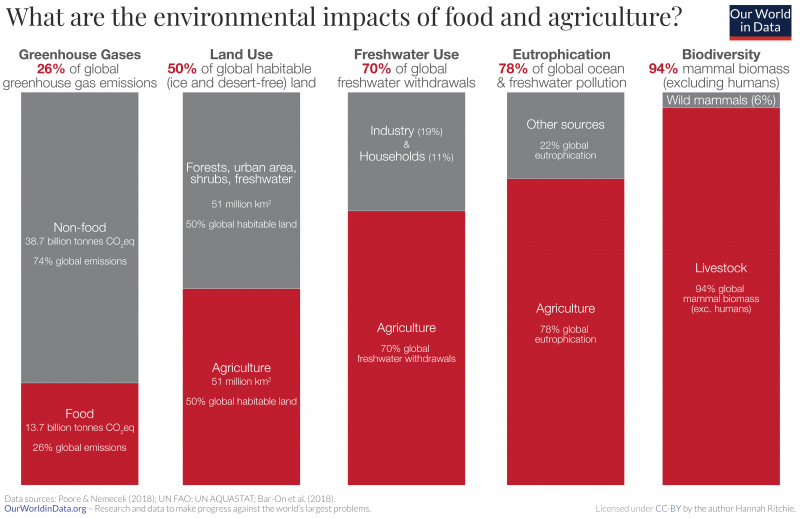Food, energy and water: this is what the United Nations refers to as the ‘nexus’ of sustainable development. As the world’s population has expanded and gotten richer, the demand for all three has seen a rapid increase. Not only has demand for all three increased, but they are also strongly interlinked: food production requires water and energy; traditional energy production demands water resources; agriculture provides a potential energy source.
Our latest series on Our World in Data focuses on the environmental impacts of food. Ensuring everyone in the world has access to a nutritious diet in a sustainable way is one of the greatest challenges we face. We cover the human aspects of food and nutrition in various entries, including hunger and undernourishment, micronutrient deficiency, food per person, diet compositions and obesity. In this series we focus more on the environmental consequences.
What are the environmental impacts of food and agriculture?
The visualization here shows a summary of some of the main global impacts:
- Food accounts for over a quarter (26%) of global greenhouse gas emissions1;
- Half of the world’s habitable (ice- and desert-free) land is used for agriculture;
- 70% of global freshwater withdrawals are used for agriculture2;
- 78% of global ocean and freshwater eutrophication (the pollution of waterways with nutrient-rich pollutants) is caused by agriculture3;
- 94% of mammal biomass (excluding humans) is livestock. This means livestock outweigh wild mammals by a factor of 15-to-1.4 Of the 28,000 species evaluated to be threatened with extinction on the IUCN Red List, agriculture and aquaculture is listed as a threat for 24,000 of them.5
Food, therefore, lies at the heart of trying to tackle climate change, reducing water stress, pollution, restoring lands back to forests or grasslands, and protecting the world’s wildlife.
